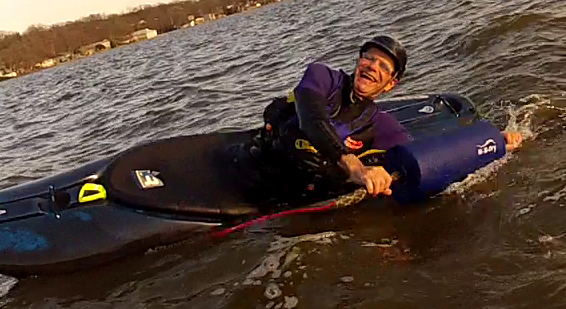Does it ever get in the way of paddling? Seems like it could limit vision as well.
Shaftfloat.com/q-a.html now addresses these questions.
My guess gonna make for a bunch of lazy paddlers then get someone killed for overconfidence
We encourage learning proper form with or without use of a Hi-N-Dry. We also encourage caution and provide advice concerning river progression to avoid cases of overconfidence clouding judgement. shaftfloat.com/river-progression.html
but if you went over with only one hand on it or, or loss your grip you couldnt pull your paddle under and roll.
We advice everyone to keep both hands on the paddle with or without a Hi-N-Dry and inverting a kayak with only one hand on the paddle is a bad idea for any kayaker. I've personally accidentally lost my grip and went over and then pulled the paddle under and rolled. The current plays a factor in this as it would with or without the Hi-N-Dry. The buoyancy is only 30ish lb and so pulling it under water to get both hands on it isn't a hurculean event. Until you have tried it, don't be so sure to say "you cannot this or will not be able to that"
If you or your dad doesn't have a solid roll without the paddle float and your running class IV, keep your health insurance up to date because someone is going to get hurt.
We recommend that no beginner attempt class 4 and that beginners see shaftfloat.com/river-progression.html for more info on selecting rivers. All mention of our class 4 accidental experience has been removed from the website to ensure nobody gets the idea that we condone a beginner running class 4 under any circumstances.
Appears that it doesn't just teach you how to roll, but how to expose your whole upper body while doing it.
In the video, I perform a back deck rodeo which is not a roll recommended for whitewater as it does expose one to rocks below the surface. We encourage use of proper form with or without the Hi-N-Dry. The Hi-N-Dry does not inherently encourage bad form. It can be used as a tool to help one learn proper form.
Hey can you modify your idea to make a counterbalanced oar float that goes between the oarlock and the oar handle? I'm assuming you have access to large diameter closed cell foam.
Custom orders are welcome. Shoot an email with what you have in mind.
Also might be helpful to develop a graduated shaft float so the paddler can be weened from the device and develop proper form. Just enough foam that you could get your head to the surface, but would need to keep your head down to right yourself.
We made a 6" diameter version as a prototype and it was insufficient in buoyancy for what we had in mind, however, it was exactly what you now describe and I'm willing to sell 6" diameter versions of the product. The 6" diam version has 17lb of buoyancy as opposed to the standard retail version with its 30lb of buoyancy.
However.....For that price, I'll buy my own foam and duct tape it to a paddle.
Price has been reduced substantially since you posted this.
![Image]()







